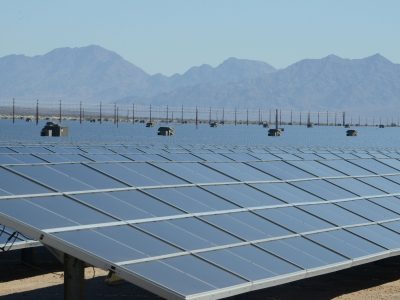Resources on the Clean Power Plan
and EPA’s Other Rulemakings under Clean Air Act § 111
 On August 3rd, EPA released its long-awaited Clean Power Plan, which implements Clean Air Act § 111(d) to set the first-ever national standards for carbon emissions from existing fossil-fuel-fired power plants. The Clean Power Plan calculates reasonably achievable performance rates for existing coal, oil, and natural gas power plants across the country, and assigns an emission-reduction target for each state based on the composition of the state’s power plant fleet. The performance rates are 1305 lbs CO2/MWh for steam generating plants and 771 lbs CO2/MWh for combustion turbines. Each state must develop, by 2018 at the latest, a plan for how to reach its assigned target by 2030. Subject to EPA’s approval, state plans can include a wide variety of flexible compliance measures, such as power plant efficiency improvements, burning natural gas instead of coal, adding new renewable or nuclear energy resources, improving demand-side energy efficiency, and participating in a multistate emission trading system. EPA projects that implementation of the Clean Power Plan will reduce carbon pollution from the power sector 32 percent below 2005 levels.
On August 3rd, EPA released its long-awaited Clean Power Plan, which implements Clean Air Act § 111(d) to set the first-ever national standards for carbon emissions from existing fossil-fuel-fired power plants. The Clean Power Plan calculates reasonably achievable performance rates for existing coal, oil, and natural gas power plants across the country, and assigns an emission-reduction target for each state based on the composition of the state’s power plant fleet. The performance rates are 1305 lbs CO2/MWh for steam generating plants and 771 lbs CO2/MWh for combustion turbines. Each state must develop, by 2018 at the latest, a plan for how to reach its assigned target by 2030. Subject to EPA’s approval, state plans can include a wide variety of flexible compliance measures, such as power plant efficiency improvements, burning natural gas instead of coal, adding new renewable or nuclear energy resources, improving demand-side energy efficiency, and participating in a multistate emission trading system. EPA projects that implementation of the Clean Power Plan will reduce carbon pollution from the power sector 32 percent below 2005 levels.
Together with the Clean Power Plan, EPA issued a proposed Federal Implementation Plan and model rules. EPA would impose the Federal Plan on any state that fails to submit or adhere to a state plan. The proposed Federal Plan includes model provisions that states can use to develop interstate emission-trading programs. EPA intends to finalize the Federal Plan and model rules in summer 2016, following public comment.
The Clean Power Plan is also accompanied by a suite of Technical Support Documents, including a lengthy Legal Memorandum describing EPA’s position on various legal issues related to the Clean Power Plan.
Simultaneously, EPA issued final carbon pollution performance standards for new and modified power plants under Clean Air Act § 111(b). The New Source Performance Standards (NSPS) require new baseload coal plants and natural gas plants to limit carbon emissions to 1400 lbs CO2/MWh and 1000-1030 lbs CO2/MWh respectively. EPA developed its new-source targets considering the emissions associated with developing an efficient supercritical pulverized coal plant with partial carbon capture and sequestration (CCS), or an efficient natural gas combined cycle plant. Certain modified or reconstructed power plants are subject to a unit-specific standard, which will be no more stringent than 1800-2000 lbs CO2/MWh—known as the “Mods Standard.”
Regular readers will recall that we discussed the proposed power plant rules at length here on LegalPlanet, including my series of posts that explored legal questions raised by the Clean Power Plan proposal, and several posts that provide background about §111, the importance of EPA’s rulemakings to climate change mitigation, and the associated political controversy. Prior to release of the final rules, we compiled all LegalPlanet resources related to §111 here.
In total, the two §111 rules, Federal Plan, and legal memo comprise over 3200 pages of text. Analyses have begun to trickle out as experts make their way through these massive and complex rulemakings. Here are some of the resources we have found useful so far:
- General EPA fact sheets, including: an overview of the Clean Power Plan, a summary of key changes from the Clean Power Plan proposal to final rule, an overview of the proposed FIP, and descriptions of the final emission-reduction targets for each state
- EPA’s summary table listing each state’s 2012 baseline emission rate and 2030 emission-reduction target.
- Kevin Polancarz & Ben Carrier (Paul Hastings), EPA Finalizes Ambitious Clean Power Plan
- Duke’s Nicholas Institute, Understanding and Evaluating the Proposed Federal Plan and Model Rules
- Georgetown Climate Center, Five Ways EPA’s Clean Power Plan Rule Provides More Flexibility to States
- Brad Plumer (Vox), How Obama’s Clean Power Plan Actually Works – A Step-by-Step Guide
- Michael Levi (Council on Foreign Relations), Five Takeaways on the EPA’s Clean Power Plan
- Nate Richardson (RFF), 10 Things We Looked for in the Clean Power Plan… and What We Found
- Useful maps from E&E [paywall] and Climate Central comparing state emission-reduction targets
- Union of Concerned Scientists, States of Progress (showing that existing clean energy commitments will put most states well on the path to meeting their Clean Power Plan)
- Columbia’s Sabin Center is compiling and will continue to update a list of all litigation challenging the Clean Power Plan, included on p. 15 of its Climate Change Litigation Chart (“Industry Lawsuits” –> “Challenges to Federal Action”)
- NRDC, Understanding the EPA’s Clean Power Plan
Legal challenges came swiftly. Within a few hours of President Obama’s announcement, more than a dozen Republican-led states promised to file lawsuits to halt the §111 regulations. Led by West Virginia, the states even tried—unsuccessfully—to obtain a “stay” to halt implementation of the Clean Power Plan before the regulations were published in the Federal Register (read Ann’s analysis here).
It may be a month or so before the lengthy rules are formally published. According to the Clean Air Act, litigants have 60 days from the date the rules appear in the Federal Register to file lawsuits in the D.C. Circuit Court of Appeals. That means more challenges are coming soon (see recent posts by Cara, Ann, and Dan previewing some inevitable legal challenges to the Clean Power Plan).
Stay tuned to LegalPlanet for more about the details of the new rules and legal challenges.
Reader Comments
3 Replies to “Resources on the Clean Power Plan”
Comments are closed.







Megan said;
“……It may be a month or so before the lengthy rules are formally published. According to the Clean Air Act, litigants have 60 days from the date the rules appear in the Federal Register to file lawsuits in the D.C. Circuit Court of Appeals. That means more challenges are coming soon……”
Dear Megan,
A more likely scenario is that the CPP may be published after the next, during Obama’s lame duck session, and then it will likely be promptly vacated by the next President. Might as well say goodbye to the CPP. The CPP, if fully implemented would have no measurable effect at all on the global climate, it is fatally flawed.
Dear Megan,
Would you (or someone else) please provide the current best estimate of the number of premature deaths that could be prevented in California if the Clean Power Plan is fully implemented?
BQRQ:
Thank you for your question. EPA projects that, nationwide, the Clean Power Plan will avoid thousands of premature deaths in 2030 and every year thereafter, including:
-1,500 to 3,600 premature deaths
-90,000 asthma attacks in children
-Up to 1,700 heart attacks
-1,700 hospital admissions
-300,000 missed school and work days
You can read more about projected health benefits here: http://www2.epa.gov/cleanpowerplan/fact-sheet-clean-power-plan-numbers